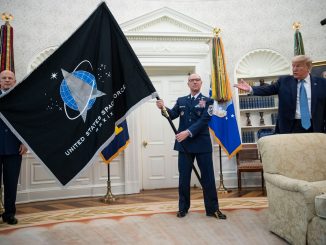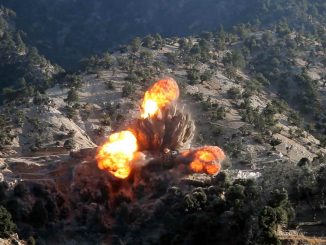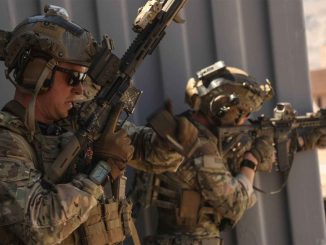

ORLANDO, Fla. — SpaceX’s Crew Dragon capsule eased its way to the International Space Station on Sunday morning, autonomously docking and marking the first time an American commercial capsule with humans aboard performed the feat.
The docking, which concluded shortly before 10:30 a.m. EDT, came at the end of a 19-hour journey in space for the newly renamed capsule, now called “Endeavour.” The name was chosen by astronauts Doug Hurley and Bob Behnken, who went on the mission, as a callback to the space shuttle Endeavour that took them both to space for the first time on separate flights.
For the two close friends, this was their mission first together.
“It’s been a real honor to be just a small part of this nine-year endeavor since the last time a United States spaceship was docked with the International Space Station,” Hurley said after the 12 hard capture pins latched onto Crew Dragon, creating an air tight seal with the ISS.
Then came the call from Johnson Space Center: “Endeavour, this is Houston. Bob and Doug, welcome to the International Space Station after your spectacular rendezvous and docking of the first Crew Dragon vehicle. For the first time since the retirement of the space shuttle, you’ve completed a historic ride to the ISS and have opened up a new chapter in human space exploration.”
The weekend mission lifted America from the dry spell it’s endured for nine years, since it lost the ability to launch its astronauts at the completion of the shuttle program in 2011.
That came to and at 3:22 p.m. EDT. Saturday, when a SpaceX Falcon 9 rocket lifted off through clear summer skies at Kennedy Space Center carrying Hurley and Behnken to low-Earth orbit.
SpaceX was one of the two contractors chosen by NASA in 2014 _ the other was Boeing _ to develop a human-rated vehicle. SpaceX’s Crew Dragon was ready to fly first.
Since launching, Behnken and Hurley have had a chance to operate two manual maneuvers inside the vehicle, as well as get some sleep.
They awoke on Sunday to Black Sabbath’s “Planet Caravan,” and the lyrics, “We sail through endless skies, stars shine like eyes.” It’s customary for NASA to wake its astronauts with music.
Floating along with them to the ISS was “Tremor,” a stuffed, sparkly dinosaur that served as the zero-G indicator for the mission, chosen by the astronaut’s two sons, Behnken’s son Theodore, 6, and Hurley’s son Jack, 10.
“That’s a super cool thing for us to get a chance to do that for both of our sons, who I hope are super excited to see their toy floating around with us,” Behnken said from a video recorded inside the capsule.
During a post-launch press conference on Saturday, SpaceX founder Elon Musk spoke about the emotion of the launch, one he and his company have been working toward since 2002. Musk had his team put a window on the cargo version of Dragon, which flew first, so they would not forget the prize: Human spaceflight.
“I’m really overcome with emotion, and it’s really hard to talk,” Musk said.
While launch and docking were successful, Musk was careful to celebrate too early. Behnken and Hurley will likely spend several months on the station before splashing down off the coast of Florida in the Atlantic Ocean.
“The return is more dangerous in some ways than the ascent,” Musk said. “So we don’t want to declare victory yet. We need to bring them home safely.”
___
This article is written by By Chabeli Carrazana from The Orlando Sentinel and was legally licensed via the Tribune Content Agency through the NewsCred publisher network. Please direct all licensing questions to legal@newscred.com.
© Copyright 2020 The Orlando Sentinel. All rights reserved. This material may not be published, broadcast, rewritten or redistributed.






Be the first to comment